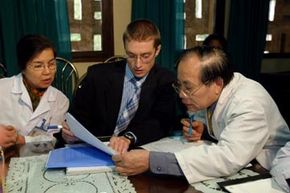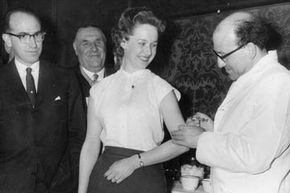Most people have heard the statistic that heart disease is the leading cause of death in America today [source: Centers for Disease Control]. But how do we know this fact to be true? Where did that information come from?
Back in 1948, when a lot wasn't known about the factors leading to heart disease and stroke, a health research study -- known as the Framingham Heart Study -- was done on 5,209 people living in the town of Framingham, Mass. These participants hadn't developed any known symptoms of cardiovascular disease and hadn't had a stroke or heart attack. They agreed to be followed over a period of time to help researchers learn what factors lead to both conditions [source: Framingham Heart Study].
Advertisement
The study was landmark in several ways. It showed that there was no one cause for getting a heart attack, and combining information about several risk factors could estimate the risk of someone getting the disease. Thanks to the Framingham Study, (which is still going on today), we now know the major risk factors that lead to cardiovascular disease. To reach these conclusions, researchers simply followed the numbers -- the biostatistics numbers to be exact.
For decades, biostatistics has played an integral role in modern medicine in everything from analyzing data to determining if a treatment will work to developing clinical trials. The University of North Carolina's Gillings School of Global Public Health defines biostatistics as "the science of obtaining, analyzing and interpreting data in order to understand and improve human health" [source: UNC School of Public Health].
Charles McCulloch, Ph.D., professor and head of biostatistics at the University of California at San Francisco, says virtually any medical research study uses biostatistics from beginning to end.
"Statisticians help medical researchers design studies, decide what data to collect, analyze data from medical experiments, help interpret the results of the analyses, and collaborate in writing articles to describe the results of medical research," he explains.
To make it even plainer: biostatistics helps researchers make sense of all the data collected to decide whether a treatment is working or to find factors that contribute to diseases. Most biostatisticians have at least a master's degree and some have doctorates, often combined with master's degree in public health. Most majored in mathematics, statistics or computer science as undergrads. They work for pharmaceutical companies, universities and government agencies like the National Institutes of Health.
Next we'll look at biostatistics in epidemiology.
Advertisement




